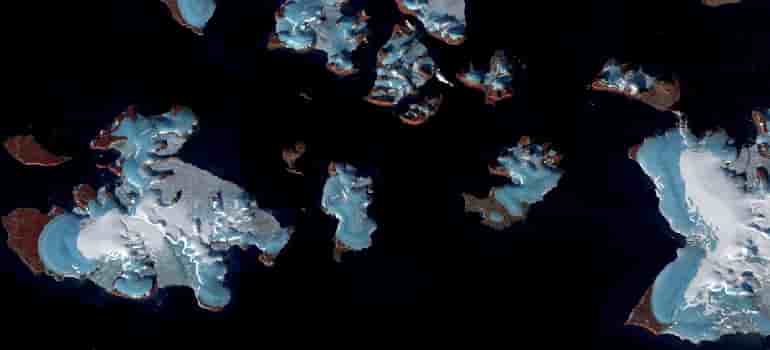Researchers reconstruct climate variations from 19.6 to 6.1 thousand years, shedding light on past climatic changes
Ancient lake sediment deposits recovered from the Indus River valley in Ladakh have unveiled hidden secrets about the climate during the period from 19.6 to 6.1 thousand years ago. This groundbreaking research provides valuable information for understanding climate variation during the last deglaciation era.
Scientists have successfully reconstructed climate records spanning thousands of years by analyzing the paleolake deposits. They identified distinct climate phases, including a cold arid period, a strong monsoon phase, and a subsequent weakening monsoon phase accompanied by enhanced El Nino activities during the Last Glacial Maxima.
The Ladakh region, situated in the Trans-Himalaya, acts as an environmental boundary between North Atlantic and monsoon forcings. Its strategic location allows researchers to gain insights into atmospheric circulations such as westerly winds and the Indian summer monsoon. Given the challenges posed by global warming, it is crucial to comprehensively understand the variability of these atmospheric circulations. Fortunately, the region offers numerous sedimentary archives, with lake deposits serving as a particularly useful resource due to their continuous sedimentation rate, enabling the examination of both short and long-term climatic changes. However, previous studies in the Ladakh region have primarily focused on the Holocene period, neglecting older periods.
Recognizing the abundance of ancient lake deposits along the Indus River that are easily identifiable, continuous, and accessible, researchers from the Birbal Sahni Institute of Palaeosciences embarked on a meticulous study. They sampled sediments from an 18-meter thick sediment sequence at an altitude of 3287 meters and conducted extensive laboratory analyses. By examining physical characteristics such as color, texture, grain size, grain composition, total organic carbon, and magnetic parameters, the scientists were able to extract crucial information about past climates from these palaeolake sedimentary archives. The findings were then used to reconstruct climate variations during the specified period.
ALSO READ: Embrace India’s Green Movement: Top Environmental Products on Amazon India”
The study revealed that a cold arid climate influenced by westerly circulation prevailed from 19.6 to 11.1 thousand years ago. Subsequently, from 11.1 to 7.5 thousand years ago, monsoon forcings dominated the region’s climate. Solar insolation, controlled by the Earth’s orbit, then became the key driver of atmospheric circulations, influencing the position of the Inter Tropical Convergence Zone (ITCZ). A brief wet phase from around 17.4 to 16.5 thousand years ago occurred within the dominant westerly period, known as the early wet phase of the two-fold H1 event. Westerlies regained strength from 7.5 to 6.1 thousand years ago during the mid-Holocene, coinciding with decreasing insolation, a weakening monsoon, and intensified El Nino activities.
“Follow Us on Google News and help us grow – Click for Latest News”
The shift from glacial to interglacial climate triggers significant climate reorganization on a large scale. Therefore, understanding the glacial-to-interglacial transitional period is crucial for comprehending climate evolution. Mountainous regions, in particular, are highly vulnerable to these changes due to their unique geomorphological characteristics. Thus, it is essential to gain a clear and comprehensive understanding of how the hydroclimate of a region changes as the climate transitions from overall colder to overall warmer conditions.
The findings of this study, published in the journal PALAEO3, provide valuable insights into past climate variations since the last deglaciation following the Last Glacial Maxima. It sheds light on the influence of different forcing mechanisms and teleconnections, enhancing our understanding of climate variability during this dynamic transitional phase, as well as the evolution of the Indian Summer Monsoon (ISM) and Westerlies during the deglaciation period.
FOLLOW US ON


